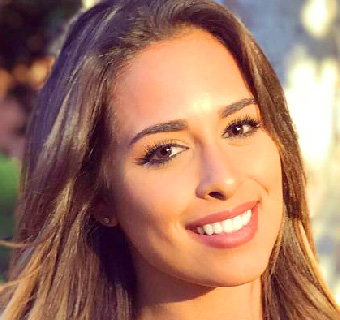Table of Contents
Major events are more than just spectacles; they’re unparalleled opportunities for brands to shine. Just like the Olympics in Paris, with billions of eyes glued to screens worldwide, the potential to make a lasting impression is immense. This is where influencer marketing steps into the spotlight. By harnessing the power of influential voices, brands can not only increase visibility but also forge deeper connections with their target audience.
Influencer marketing for major events has become a cornerstone of modern marketing strategies. It’s about more than just product placement; it’s about aligning your brand with cultural moments and creating authentic experiences that resonate.
As we delve deeper into the world of major events, we’ll explore how to identify the right influencers, develop compelling campaigns, and measure the impact of your efforts.
Understanding the Power of Major Events
Major events are cultural touchstones that capture the world’s attention. From the Olympics to fashion weeks, these occasions generate unprecedented levels of engagement and media coverage. For brands, this translates to a unique opportunity to expand their reach and connect with a highly engaged audience.
The allure of major events lies in their ability to evoke strong emotions and create shared experiences. By aligning your brand with the excitement and energy of these occasions, you can tap into a powerful emotional connection with consumers.
Moreover, the increased media scrutiny during major events provides a platform to amplify your brand’s message and reach a wider audience.
Leveraging influencer marketing for major events can exponentially increase your brand’s visibility and impact. By partnering with influential figures who resonate with the event’s theme, you can create authentic and engaging content that captures the attention of millions.
Identifying the Right Influencers
Image by True Fanz from Pixabay
Selecting the perfect influencer for a major event is akin to finding a needle in a haystack, but with a strategic approach, it becomes achievable. The cornerstone of successful influencer selection lies in a deep understanding of your target audience and the event itself.
Influencer marketing for major events demands a meticulous evaluation process. Key criteria include audience demographics, reach, and engagement rates. An influencer with a large following is undoubtedly enticing, but their audience’s alignment with your brand is paramount. Consider factors like age, gender, location, interests, and values when assessing potential partners.
Beyond numbers, authentic partnerships are the lifeblood of successful campaigns. Influencers who genuinely resonate with your brand and its values are more likely to create content that feels genuine and relatable to their followers. A forced partnership can be easily detected by audiences, leading to decreased trust and engagement.
By carefully analyzing these indicators, you can identify influencers who deliver the best results and refine your selection process accordingly. Integrating B2B data can provide deeper insights into how your influencer marketing efforts resonate within business communities, helping to tailor campaigns that better reach and engage your target B2B audience. Consider how email warming techniques can help you maintain communication with influencers, ensuring your messages don’t land in spam folders and fostering better relationships over time.
Developing an Effective Influencer Marketing Campaign
Once you’ve identified the ideal influencers for your major event, it’s time to craft a compelling campaign that resonates with your target audience. A well-structured campaign involves careful planning, execution, and measurement.
Influencer marketing for major events requires a clear definition of campaign goals. Are you aiming to increase brand awareness, drive sales, or generate leads? Setting specific objectives will guide your strategy and help measure success.
Content creation is the heart of any influencer marketing campaign. Encourage influencers to create authentic and engaging content that aligns with the event theme and your brand values. Whether it’s Instagram stories, TikTok challenges, or blog posts, ensure the content resonates with the influencer’s audience while effectively promoting your brand. Part of this strategy should include a well-timed email cadence to keep both the influencer and audience engaged throughout the campaign.
For events like the Olympics, consider creating content that aligns with the spirit of competition, such as behind-the-scenes footage, athlete interviews, or inspiring stories. By leveraging the excitement and energy of the Games, you can capture the attention of millions of viewers.
To gauge the effectiveness of your campaign, it’s essential to track key performance indicators (KPIs). Metrics such as impressions, engagement rates, click-through rates, and conversion rates can provide valuable insights into campaign performance.
By analyzing these metrics, you can identify areas for improvement and optimize future efforts.
Case Studies: Learning from the Best
To truly grasp the power of influencer marketing for major events, it’s essential to learn from real-world examples. Examining successful campaigns can provide valuable insights into effective strategies and tactics. By analyzing case studies, you can identify trends, best practices, and potential pitfalls.
Look for campaigns that achieved exceptional results in terms of brand awareness, engagement, and ROI. Understanding the factors that contributed to their success can help you replicate similar outcomes for your own campaigns.
For instance, consider how brands like Nike and Adidas have leveraged major sporting events to create iconic influencer partnerships. Analyze their campaign strategies, influencer selection, and content creation to gain a deeper understanding of what works.
During the Super Bowl LVII event in 2023, Doritos leveraged the immense popularity of TikTok by partnering with a group of TikTok creators and celebrities to create a series of short, engaging videos leading up to the Super Bowl. The campaign centered around the theme of “Crash the Super Bowl,” encouraging fans to create their own Doritos-themed commercials.
The campaign was a huge success, generating massive engagement on TikTok and other social media platforms. By tapping into the creative energy of the platform, Doritos was able to connect with a younger audience and create a sense of community around the brand. Using strategies like sending bulk cold email campaigns to reach out to potential influencers and collaborators can be an effective way to quickly establish connections and build your influencer network.
This example demonstrates how brands can effectively utilize influencer marketing and social media platforms to maximize the impact of their marketing.
By studying these case studies, you can develop a strong foundation for your own influencer marketing campaigns and increase your chances of achieving remarkable results.
Overcoming Challenges in Influencer Marketing for Major Events
While influencer marketing for major events offers immense potential, it’s not without its challenges. From budget constraints to influencer fraud, navigating these obstacles is crucial for campaign success.
One of the most common challenges is budget limitations. Securing high-profile influencers can be costly, particularly during major events.
To overcome this, consider micro-influencers or collaborating with multiple influencers to maximize your budget’s impact.
Measuring an influencer’s relevance and impact is crucial for optimizing future campaigns. Key metrics include engagement rates, click-through rates, and conversion rates vs ROI.
Influencer fraud is another significant concern. Fake followers, engagement, and even fake influencers can distort campaign results. Thorough vetting and influencer analytics tools are essential to mitigate this risk.
Additionally, competition for influencer partnerships during major events is fierce. To stand out, focus on building long-term relationships with influencers rather than one-off collaborations. This approach can enhance brand loyalty and secure exclusive partnerships in the future.
By proactively addressing these challenges, you can increase the likelihood of a successful influencer marketing campaign during major events.
Conclusion
Major events offer unparalleled opportunities for brands to connect with a captivated audience. By harnessing the power of influencer marketing for major events, businesses can significantly enhance their brand visibility, engagement, and ultimately, their bottom line.
From carefully selecting influencers who align with your brand values to developing compelling content and measuring campaign performance, a strategic approach is essential for success.
While challenges such as budget constraints and influencer fraud exist, with careful planning and execution, these obstacles can be overcome.
By embracing influencer marketing as a core component of your event marketing strategy, you can position your brand at the forefront of cultural conversations and drive lasting impact.
























